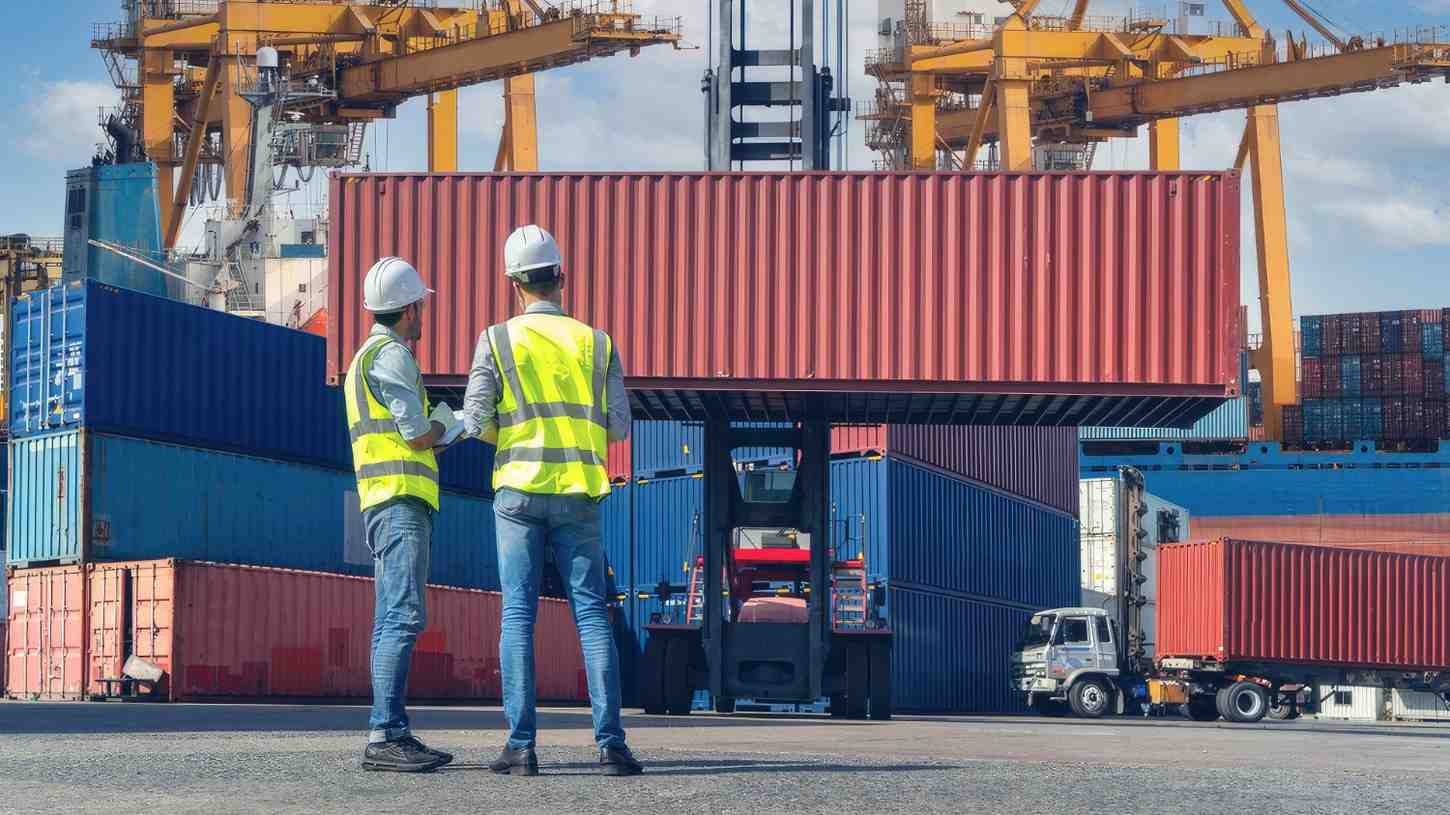
Digital technology lets businesses, including those in logistics, gather a lot of data. It’s important for these companies to use this data well, as it can lead to better products and services.
Using big data correctly can really boost how well a logistics company does, and even change how the whole industry works.
Think about how online stores use loads of customer data to suggest items you might like. In the same way, logistics companies need to gather, save, and study data from every important part of their business to make smart decisions.
Big data helps these companies take massive amounts of information and use it to their benefit. But what does it take to turn all this data into useful tips and strategies?
Let’s talk about how analyzing big data in logistics works and the good things companies can get from it. plus, we’ll show how big data analysis can make your logistics business more transparent and productive.
What is Data Analytics?
Data analytics is the process of extracting critical information from unprocessed data. If done correctly, this practice allows companies to identify hidden tendencies and patterns. These, in turn, can be used to create strategies that can lead to business improvement and accelerated growth.
The analysis of information is vital for logistics and transportation companies because each data set represents an opportunity to improve.
Many logistics companies already use big data analytics to update their products, improve customer services, and identify organizational areas of improvement.
In the logistics sector, there are a few types of data analysis and you need to know them if you want to apply data analytics wisely.
- Descriptive analytics: A set of information that describes what happened over a period of time. For data analysis in logistics, this can be something like truck mileage.
- Diagnostic analytics: Details that are used to identify the causes of an event. For example, determining the cause of a failure using an audit log.
- Predictive analytics: This type of analytics is used to predict future occurrences. Big data in logistics can help companies avoid future issues and predict better provisions.
- Prescriptive analytics: Prescriptive analytics are used to identify the best actions based on predictive scenarios. Here, experts create a plan to deal with potential setbacks.
The Emergence of Big Data in Logistics
The logistics industry was historically characterized by its reliance on conventional methods and has been reshaped by the digital revolution.
Big Data, a term that refers to the large volumes of data generated every second, has become a cornerstone in this transformation. This data, when effectively analyzed, provides insights that were previously unimaginable.
In logistics, this means enhanced visibility across supply chains, improved decision-making, and a significant boost in overall efficiency.
Big data processing is valuable for many industries, and the logistics sector is not an exception. The problem is that it’s not possible to process all this information using conventional manual methods.
By using big data processing technologies, logistics companies can use input from various sources and turn it into productive information to make the right decisions.
For example, transportation and logistics service providers collect data like the weight and size of packages, shipment location, and destination. Then, they can transform this data into actionable information.
For example, determining the best way to send a specific number of packages from one destination to the next using the fewest possible resources.
As a result of it, companies can become more efficient, get acquainted with the latest market trends, analyze customers buying patterns, and so on. This means that big data can lead to cost reduction.
How Big Data Works in Logistics
There are different ways to work with big data. Companies with enough resources can hire a team of engineers to develop their infrastructure for processing and analysis.
However, more often than not, companies use readymade tools that provide services like report generation, and accounting and help analyze big data.
Big data in logistics refers to the collection, processing, and analysis of complex datasets related to logistics management operations. You can use GPS devices, sensors, RFID tags, and enterprise resource planning (ERP) systems. A comprehensive approach improves transportation, inventory, demand forecasting, warehouse management, and supply chain optimization.
Most transportation companies already employ a data-driven approach to decision-making. According to the 2023 Inbound Logistics Report, the majority of 3PL providers use IT capabilities for EDI (94%), transportation management (89%), visibility of orders and inventory (84%), ERP integration (72%), and customer relationship management (66%).
The full potential of Big Data in the logistics industry is yet to be harnessed. Firstly, it can help to utilize maximum resources and improve transparency, thus enhancing operational efficiency.
For instance, automated transportation management systems use intelligent software that controls the fleet, automates routine tasks, and schedules shipments.
Secondly, this innovation can assist businesses in improving customer experience by maintaining customer loyalty and retaining them, and on top of it, implementing an effective data-driven business model results in increased revenue.
Companies highlight that analytics of big data in supply chains offer visibility of operations as they happen. This enables logistics firms to keep an eye on inventory, follow shipment progress, and spot potential issues before they become problems. The result is a supply chain that is more agile and able to respond quickly to changes.
Logistics companies can also use big data data to predict equipment failure and maintenance needs. Apply it to reduce downtime, increase equipment utilization, and extend the lifespan of assets.
“Fulfillment and supply chain as a whole are both extremely data-driven, but at the same time are far behind technologically compared to other industries. In order to adapt to incredibly dynamic supply chains, our customers are demanding cutting-edge tech and thus we are demanding cutting-edge tech to serve them properly,”says Frazer Kinsley the CEO of Hook Logistics.
While discussing the varied applications of big data in logistics, it’s worth noting the role of innovative platforms like road freight marketplaces in augmenting these data-driven strategies.
The Impact of Big Data on Logistics
The implementation of new technology in your business processes may be costly, time-consuming, and complex. However, the use of big data in logistics has significant advantages. Let’s look at how Big Data impacts logistics:
Artificial Intelligence
Artificial Intelligence (AI) automates logistics scheduling and routing. By using predictive analytics, AI helps logistics companies anticipate potential problems and mitigate these risks.
For example, big data in warehouses leverages AI to optimize warehouse layouts, fleet routes, and inventory management processes.

Machine Learning
Machine learning (ML) algorithms identify patterns and trends in logistics data, such as transport routes, inventory levels, and delivery times. What can these patterns of analysis provide logistics companies? Improved supply chain visibility, optimized operations, and streamlined data-driven decisions.
Internet of Things
Internet of Things (IoT) sensors collect real-time data on shipments, vehicles, and warehouse operations. Analyze this information to optimize supply chain visibility and improve decision-making. For example, IoT sensors monitor the condition of goods in transit, track inventory levels, and maximize the use of warehouse space.
Advantages of Leveraging Big Data for Enhanced Logistics Efficiency
By integrating supply chain and data analytics, logistics companies get many benefits. Let’s discuss the most important ones:
Improved Visibility and Transparency
Big data analytics in the supply chain, together with GPS devices and other tracking tools, allow logistics companies to monitor the movement of goods in real-time.
That information is combined with fleet data, traffic data, and on-road network data. As a result, logistics managers can easily plan and schedule deliveries, considering the predictions about weather conditions, traffic jams, road conditions, and gas station locations, among others.
Using big data helps logistics companies gain insights into their supply chain management to identify bottlenecks and streamline operations. Enhanced transparency increases customer satisfaction by providing real-time tracking information and building customer trust. As a result, using big data in shipping enables risk mitigation and drives better outcomes.
This not only results in increased efficiency of logistics operations but also more real-time updates for the customers and partners. They can monitor the delivery status of parcels in real time. Moreover, the customers get automated notifications if any delay is expected.
Cost Reduction and Enhanced Operational Efficiency
There are many ways in which the use of Big Data in logistics can help save money. These are the main areas of cost reduction:
- Route optimization: Big Data technology can help to find the best route for delivery. Analyzing data from sensors in vehicles as well as weather reports and traffic updates, advanced logistics software can help select the optimal course of action. As a result, the companies can save a great deal of money, mostly due to reduced fuel consumption.
- Predictive maintenance and driving optimization: Advanced analytics systems can dig into driving habits such as speeding up, braking, driving time, etc. Some inefficient practices can be spotted and weeded out. On top of it, the data about fleet conditions allows companies to conduct maintenance in advance, which results in reduced fuel consumption and fewer delays due to vehicle breakdowns.
- Smooth last-mile delivery: According to Insider Intelligence data, last-mile delivery costs represent 53% of the total shipping expenses. The most cost-related pain points include working with carriers (42%), reliance on manual processes (41%), driver retention (41%), fuel costs (32%), WISMO (“Where is my order?”) calls (28%), and cost of returns (28%). And these are just the moments that can be optimized with the help of big data.
 Big Data in logistics can help analyze the information about all stages of the delivery process, including the last mile. As a result, logistics companies detect specific patterns to optimize their delivery strategies.
Big Data in logistics can help analyze the information about all stages of the delivery process, including the last mile. As a result, logistics companies detect specific patterns to optimize their delivery strategies. - Real-time tracking and management: With live tracking, logistics companies can identify and proactively mitigate potential delays, minimizing costs associated with disruptions and delays. By optimizing routes and schedules based on real-time big data in the supply chain, logistics companies improve shipping management and reduce time and fuel consumption.
- Efficient warehousing: Big Data gives those in charge of warehouses clear information about how goods are loaded, transported, and unloaded. It also helps them see how customer habits and demands are changing. Using this data, managers can make delivery routes better and plan schedules more efficiently, which helps increase the warehouse’s productivity.
- “The data can reveal behavioral patterns of drivers and delivery crews that have local knowledge about their route territory and know better than any algorithm or data source where to park, which shortcut to take, or which congestion hotspot to avoid. Extracting this knowledge without having to disrupt crew member workflows can achieve significant improvements in route planning, shipping speed, and more effective delivery instructions”, claims Matthias Winkenbach, the Director of the MIT Megacity Logistics Lab.DHL sees great promise in digital twins, based on big data, as they can predict the behavior of assets and systems, simulating and optimizing route management.
Carrier Ratings
You need to evaluate performance to increase the safety and efficiency of transportation and big data analysis will help you.
When you make decisions based on big data, you reduce the loss due to theft. Not only this but there’s enough data to change carriers as soon as it becomes a problem.
When you analyze carrier ratings from different companies for an extended period among other data, you can decide who you can work with.
Information About Drivers
Many companies create databases of drivers and choose who to work with to avoid transportation problems as well as disputes with customers.
Big data analysis makes it possible to verify drivers based on their history and performance before deciding whether or not to work with them.
Big Data Use Cases in Logistics and Supply Chain Management
How other companies use big data in supply chain management and logistics it is always a good idea to analyze. So here are a few of the real-life cases for you to understand what you can achieve with big data so far.
Routes Optimisation
As we mentioned earlier, big data in transportation is critical to optimize routes and ensure timely delivery. If you don’t deliver cargo on time, It will be a blow to your reputation as a logistics company.
To address this, the shipping company UPS integrated the ORION (On-Road Integrated Optimization and Navigation) algorithm into their software.
The ORION algorithm uses descriptive and predictive analytics to forecast potential problems. ORION has information about more than 60,000 routes around the US, Canada, and Europe.
The latest upgrade, which is being rolled out in 2021, is called “dynamic ORION.” Its distinctive feature is reoptimized routes, which are fine-tuned depending on changing conditions. The latter may include traffic, pickup commitments, or changes in delivery orders. The result is driver routes, which are shorter by an average of two to four miles per driver. Almost all UPS vans use the new system.
The company claims that ORION has saved around 100 million miles and 10 million gallons of fuel each year. The new version is expected to push those figures even higher.
Warehouse Management
Large warehouses can be a nightmare if workers don’t use modern technologies to monitor the supply and delivery.
Amazon Robotics is a great example of how big data, Internet of Things (IoT) technology, and robotics create an intelligent warehouse and automate logistics processes.
Big Data algorithms process vast amounts of data to control and manage robots. For example, algorithms may determine how many bots should be deployed, their routes, optimal speed, etc.
The company began using robotics in 2012 as it acquired a Boston-based Kiva systems company (renamed Amazon Robotics). In 2014 the company used around 15,000 mobile drive unit robots in its warehouses. By 2018 this figure grew to 100,000 units; in 2021 it reached an astounding 350,000 units.
Logistics Cost Reduction
Logistics companies certainly want to reduce fuel and repair costs, so big data analytics is the right approach to it.
DHL has created a Smart Truck solution to reduce logistics expenses. A large portion of its fleet can transport perishable goods, requiring specific temperatures (from -25ºC to +25ºC).
The smart vans are filled with IoT-enabled sensors monitored through the control tower. As a result, both operations teams and customers can track the consignment and its temperature in real-time.
Status updates are also sent through the customer portal and mobile applications. The accumulated data about the vehicle and its condition is used for route optimization and preventive maintenance.
According to DHL, these innovations resulted in reducing transit times by 30% in comparison to the conventional trucking industry. Moreover, DHL SmarTrucking claims to provide 95% on-time delivery. At present, the company operates in India, having 745 trucks and 12 SmartHubs at its disposal.
Conclusion
The transformative impact of Big Data in logistics has been profound, reshaping the industry from route optimization to enhanced warehouse management. It empowers companies to process vast datasets, leading to increased efficiency and improved customer satisfaction.
Leading examples like UPS, Amazon, and DHL demonstrate substantial benefits from Big Data, including cost savings and more efficient resource utilization.
As the industry evolves, embracing data-driven strategies is crucial for logistics companies to stay competitive and meet market demands. This integration of Big Data signifies not just a trend but a fundamental shift towards more intelligent, responsive, and efficient logistics operations.
Frequently Asked Questions (FAQs)
- Why is big data important in logistics?Answer: Big data algorithms make it possible to improve logistics operations and provide better customer service. In addition, they help managers predict the future situation in the market and build competitive strategies, resulting in better business performance.
- What is data analytics in logistics?Answer: Data analytics in logistics is the process of analyzing and transforming large data sets into actionable information to be used in a logistics business.Simply put, data analytics helps companies store, process, and analyze huge amounts of information to use for business advantage and growth.
- How is big data used in logistics?Answer: Big data in logistics has dozens of different uses. The most widespread ones are route optimization, freight planning, equipment monitoring, warehouse management, and predictive analytics, but these are not the only options.






